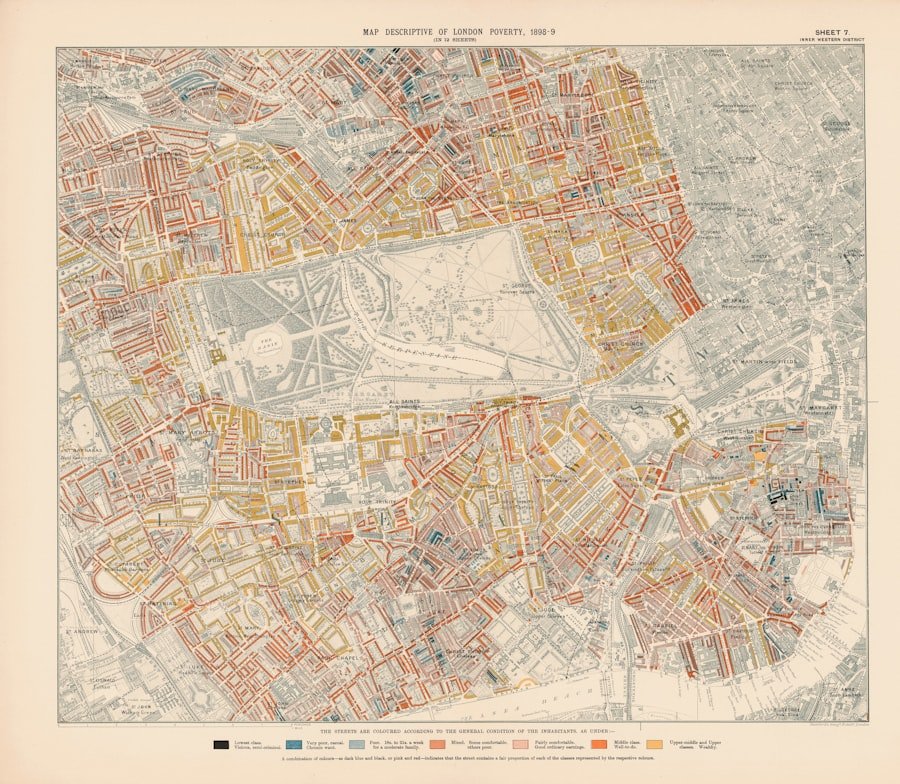In an increasingly interconnected world, the ability to share one’s location has become a vital feature for both personal and professional interactions. Whether coordinating a meeting with friends, ensuring the safety of loved ones, or simply navigating through unfamiliar territories, location sharing has transformed how we communicate and interact. For users of different platforms, such as Android and iPhone, the process of sharing location can sometimes present challenges due to the differences in operating systems.
However, with the right tools and knowledge, sharing location between these two platforms can be seamless and efficient. The significance of location sharing extends beyond mere convenience; it plays a crucial role in enhancing safety and improving logistical coordination. For instance, parents can keep track of their children’s whereabouts, while friends can easily find each other in crowded venues.
As technology continues to evolve, the methods for sharing location have diversified, offering users a variety of options tailored to their specific needs. This article will delve into the various methods available for sharing location from Android devices to iPhones, providing detailed insights into each approach.
Key Takeaways
- Sharing location between Android and iPhone is possible and can be done through various methods.
- Setting up location sharing on Android involves enabling location services and accessing the location sharing feature in the settings or through a third-party app.
- Google Maps can be used to share location with iPhone users by sending a link or using the “Share your location” feature.
- Third-party apps like WhatsApp, Facebook Messenger, and Find My Friends can be used to share location between Android and iPhone users.
- Messaging apps like WhatsApp and iMessage allow users to share their current location with contacts, making it easy to share location in real-time.
Setting up Location Sharing on Android
Enabling Location Services
To set up location sharing on an Android device, it is essential to enable location services first. This can be done by navigating to the device’s settings, selecting “Location,” and toggling the switch to enable it.
Ensuring a Reliable Internet Connection
Additionally, users should ensure that their device is connected to a reliable internet source, either through Wi-Fi or mobile data, as this will facilitate accurate location tracking.
Sharing Location via Google Maps
Once location services are activated, users can choose their preferred method for sharing their location. One of the most common ways is through Google Maps, which is pre-installed on most Android devices. To share their location via Google Maps, users need to open the app, tap on the blue dot that represents their current location, and select “Share your location.” From there, they can choose how long they want to share their location and with whom. This flexibility allows users to share their whereabouts temporarily or for an extended period, depending on their needs.
Using Google Maps to Share Location with iPhone Users

Google Maps serves as a powerful tool for sharing location between Android and iPhone users due to its cross-platform compatibility. To initiate location sharing from an Android device to an iPhone user, the Android user must first ensure that both parties have Google Maps installed on their devices. Once confirmed, the Android user can follow the steps outlined previously to share their location.
After selecting “Share your location,” the user will be prompted to choose a method for sharing. They can opt to share via a link or directly through various messaging platforms. If they choose to share via a link, Google Maps generates a unique URL that can be sent through text messages, emails, or any other communication app.
The recipient, regardless of whether they are using an Android or iPhone device, can click on the link and view the sender’s real-time location on Google Maps. This method is particularly useful for coordinating meet-ups in busy areas or providing directions to someone unfamiliar with the surroundings. Moreover, Google Maps allows users to set a specific duration for how long they want their location to be shared.
This feature is beneficial for temporary situations where constant tracking is unnecessary. Users can select options ranging from 15 minutes to several hours or even choose “Until you turn this off.” This level of control over location sharing enhances user privacy while still providing the necessary information to friends or family members.
Using Third-Party Apps to Share Location between Android and iPhone
| Third-Party App | Platform Compatibility | Features | Privacy Controls |
|---|---|---|---|
| Google Maps | Android, iPhone | Real-time location sharing, ETA sharing, location history | Customizable sharing duration, option to share with specific people |
| Android, iPhone | Real-time location sharing, live location tracking | Option to share live location for a specific duration, end-to-end encryption | |
| Find My Friends | iPhone | Real-time location sharing, location-based notifications | Option to share location with specific friends, location sharing alerts |
| Life360 | Android, iPhone | Real-time location sharing, location history, driving safety features | Customizable location sharing circles, emergency alerts |
In addition to Google Maps, several third-party applications facilitate location sharing between Android and iPhone users. Apps like Life360 and Glympse are designed specifically for this purpose and offer unique features that enhance the user experience. Life360 is particularly popular among families as it provides not only location sharing but also safety features such as driving reports and emergency alerts.
To use Life360 for sharing location, both parties must download the app and create accounts. Once set up, users can create a “Circle” that includes family members or friends with whom they wish to share their locations. The app allows users to see each other’s real-time locations on a map and even receive notifications when someone arrives at or leaves a designated place.
This level of connectivity fosters a sense of security among family members while ensuring that everyone remains informed about each other’s whereabouts. Glympse is another excellent option for temporary location sharing. Unlike Life360, Glympse does not require users to create accounts or download the app on both devices; instead, it allows users to share their location via a simple link.
Users can send a Glympse by selecting how long they want to share their location and then sending the generated link through any messaging platform. The recipient can view the sender’s real-time location without needing to download any additional apps, making it an incredibly user-friendly option for quick and easy location sharing.
Sharing Location through Messaging Apps
Messaging apps have become ubiquitous in modern communication, and many of them now include built-in features for sharing locations. Popular platforms such as WhatsApp, Facebook Messenger, and Telegram allow users to share their current locations with ease. This method is particularly convenient as it eliminates the need for additional apps or complicated setups.
For instance, in WhatsApp, users can share their live location by opening a chat with the person they wish to share with, tapping on the attachment icon (the paperclip), and selecting “Location.” From there, they can choose “Share Live Location” and specify how long they want to share it—options typically range from 15 minutes to 8 hours. The recipient will receive a notification in the chat that includes a map showing the sender’s real-time position. This feature is especially useful during events like concerts or festivals where meeting up can be challenging due to large crowds.
Facebook Messenger also offers similar functionality. Users can tap on the “+” icon in a chat window and select “Location” from the menu options. They can then choose to share their current location or send a static map pin indicating where they are located.
This method is straightforward and allows for quick communication without needing to switch between different applications.
Troubleshooting Common Issues when Sharing Location between Android and iPhone

Despite the various methods available for sharing locations between Android and iPhone devices, users may encounter some common issues that can hinder this process. One prevalent problem is related to permissions; if either user has not granted the necessary permissions for location services in their device settings, sharing will not function correctly. It is crucial for both parties to check that their respective apps have permission to access their device’s location services.
Another common issue arises from connectivity problems. If either user has a weak internet connection or is experiencing network issues, real-time location sharing may not work as intended. Users should ensure they are connected to a stable Wi-Fi network or have sufficient mobile data before attempting to share their locations.
Additionally, if using Google Maps or third-party apps like Life360 or Glympse, both users should ensure they are running the latest version of the app to avoid compatibility issues. In some cases, users may find that shared locations do not update in real-time as expected. This could be due to battery-saving settings on either device that limit background activity for certain apps.
Users should check their battery optimization settings and consider disabling them for apps involved in location sharing if they encounter this issue.
Privacy and Security Considerations when Sharing Location
While sharing location can enhance safety and convenience, it also raises important privacy and security considerations that users must keep in mind. One of the primary concerns is ensuring that only trusted individuals have access to one’s real-time location information. Users should be cautious about whom they share their locations with and consider using temporary sharing options when possible.
Additionally, many apps provide settings that allow users to control who can see their shared locations and for how long. For example, Google Maps allows users to stop sharing their locations at any time with just a few taps. It is advisable for users to regularly review these settings and adjust them according to their comfort levels regarding privacy.
Another critical aspect of privacy is understanding how shared location data may be used by third-party applications. Some apps may collect data on user locations for advertising purposes or other analytics without explicit consent from users. Reading privacy policies before downloading apps or enabling location sharing features can help users make informed decisions about which services they trust with their data.
Conclusion and Final Tips for Sharing Location between Android and iPhone
In summary, sharing location between Android and iPhone devices is not only feasible but also straightforward when utilizing the right tools and methods. From built-in features in Google Maps and messaging apps to dedicated third-party applications like Life360 and Glympse, users have multiple options at their disposal for effective communication regarding their whereabouts. To enhance the experience further, users should familiarize themselves with each method’s specific features and limitations while remaining vigilant about privacy settings and permissions.
Regularly updating apps and ensuring stable internet connections will also contribute significantly to successful location-sharing experiences. By taking these considerations into account, individuals can enjoy the benefits of seamless communication while maintaining control over their personal information in an increasingly digital world.
If you are looking to share your location from an Android device to an iPhone, you may also be interested in learning more about how to securely transfer files between devices. Check out this article on appssoftwares.com for tips on how to safely share files across different platforms.
FAQs
What are the different ways to share location from Android to iPhone?
There are several ways to share location from an Android device to an iPhone, including using messaging apps, email, and location-sharing apps.
Can I share my location from Google Maps on Android to an iPhone user?
Yes, you can share your location from Google Maps on an Android device to an iPhone user by using the “Share Location” feature within the app.
Is it possible to share my location from WhatsApp on Android to an iPhone?
Yes, you can share your location from WhatsApp on an Android device to an iPhone user by using the “Share Location” feature within the app.
Are there any third-party apps that can help me share my location from Android to iPhone?
Yes, there are several third-party apps available on both the Google Play Store and the Apple App Store that can help you share your location from an Android device to an iPhone.
Can I share my location from an Android device to an iPhone using email?
Yes, you can share your location from an Android device to an iPhone using email by sending a link to your location using a mapping app or location-sharing app.
What precautions should I take when sharing my location from Android to iPhone?
When sharing your location from Android to iPhone, it’s important to only share your location with trusted individuals and to be mindful of your privacy and security settings.
